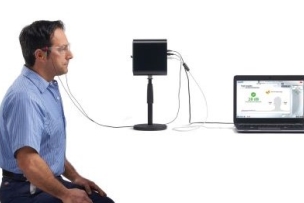Scope and application (29 CFR 1910.1053 (a))
This section (i.e. 29 CFR 1910.1053) applies to all occupational exposures to respirable crystalline silica, except:
- Construction work (see 29 CFR 1926.1153)
- Agricultural operations covered under 29 CFR 1928
- Exposures that result for the processing of sorptive clays
This rule does not apply where employee exposures will remain below 25 μ/m3 as an 8-hour time-weighted average (TWA) under any foreseeable conditions.
This rule does not apply if the employer complies with 29 CFR 1926.1153 and:
- The task performed is indistinguishable from a construction task listed in Table 1 in paragraph (c) of 29 CFR 1926.1153 and
- The task will not be performed regularly in the same environment and conditions.
Definitions (29 CFR 1910.1053(b))
The following is a partial list of the definitions from the respirable crystalline silica standard verbatim. Only definitions from the silica standard that are used in this document were copied.
Action level means a concentration of airborne respirable crystalline silica of 25 μg/m3, calculated as an 8-hour TWA.
Employee exposure means the exposure to airborne respirable crystalline silica that would occur if the employee were not using a respirator.
Objective data means information, such as air monitoring data from industry-wide surveys or calculations based on the composition of a substance, demonstrating employee exposure to respirable crystalline silica associated with a particular product or material or a specific process, task, or activity. The data must reflect
workplace conditions closely resembling or with a higher exposure potential than the processes, types of material, control methods, work practices, and environmental conditions in the employer’s current operations.
Physician or other licensed health care professional [PLHCP] means an individual whose legally permitted scope of practice (i.e., license, registration, or certification) allows him or her to independently provide or be delegated the responsibility to provide some or all of the particular health care services required by paragraph (i) of this section (29 CFR 1910.1053).
Regulated area means an area, demarcated by the employer, where an employee’s exposure to airborne concentrations of respirable crystalline silica exceeds, or can reasonably be expected to exceed, the PEL.
Respirable crystalline silica means quartz, cristobalite, and/or tridymite contained in airborne particles that are determined to be respirable by a sampling device designed to meet the characteristics for respirable-particle size- selective samplers specified in the International Organization for Standardization (ISO) 708:1995: Air Quality—Particle Size Fraction Definitions for Health-Related Sampling.
Specialist means an American Board Certified Specialist in Pulmonary Disease or an American Board Certified Specialist in Occupational Medicine.







Talk to Us!
Leave a reply
Your email address will not be published. Required fields are marked *